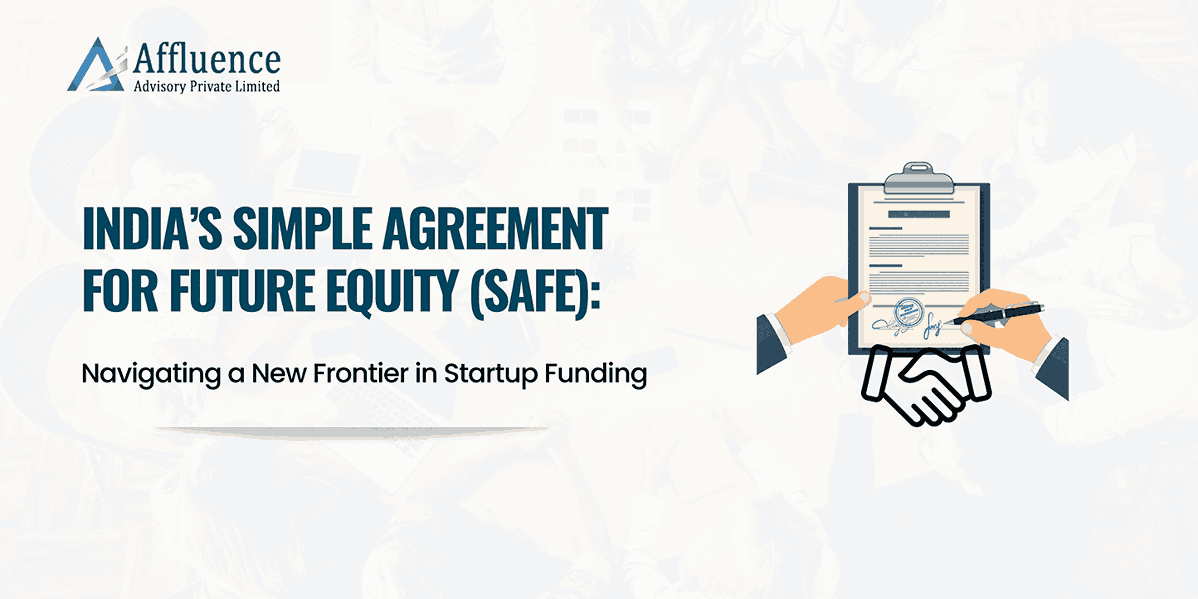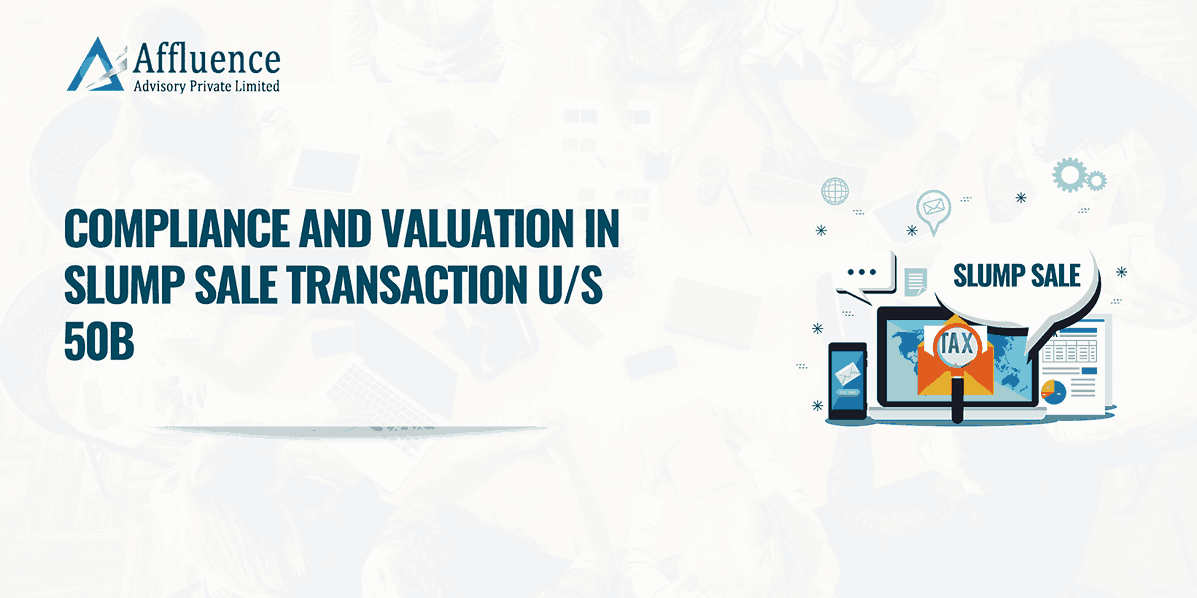Author: Ankit Baid, Research Analyst at Affluence Advisory
India’s startup ecosystem is evolving rapidly, with innovative funding instruments like the SAFE (Simple Agreement for Future Equity) gaining traction. Traditionally, Indian startups raised early capital through priced equity rounds or convertible notes—both of which require negotiating valuations early on. In contrast, SAFEs, created by Y Combinator in 2013, defer this negotiation. They allow founders to raise funds now in exchange for a promise of equity when a later funding round occurs. Unlike convertible debt, SAFEs have no interest or maturity, making them simpler and founder-friendly. In the U.S., SAFEs have become the dominant tool for pre-seed deals—by late 2023, they accounted for nearly 90% of early-stage startup deals.
What is a SAFE Note?
A SAFE is a contract where an investor provides money upfront, and the startup promises future equity when certain events—like the next priced round, acquisition, or IPO—occur. It’s not debt: there’s no interest and no repayment obligation. Instead, it works like a right to receive shares later, often with investor protections like a valuation cap (a maximum valuation for conversion) or a discount (typically 15–20%) to reward early risk-taking. Some SAFEs also have “Most Favored Nation” (MFN) clauses to ensure early investors get the same terms as later SAFE investors.
The simplicity of SAFEs benefits founders—no drawn-out valuation debates or detailed shareholder agreements at the seed stage. For investors, SAFEs offer an early equity stake with protections against excessive dilution.
The iSAFE: India’s Adaptation
While SAFEs are widely accepted in the U.S., India’s laws did not initially accommodate a “no-interest, no-maturity” contract. The Companies Act, 2013 recognizes equity shares, preference shares, and debentures—but not pure SAFEs. To address this gap, Indian VC firm 100X.VC introduced the iSAFE in 2019, structuring it as Compulsorily Convertible Preference Shares (CCPS). Legally, iSAFE is a type of preferred share that must convert into equity under agreed terms, ensuring compliance with Indian corporate law.
This CCPS-based structure means iSAFEs are treated as share capital (not debt) and don’t need a pre-determined valuation. Conversion triggers are like U.S. SAFEs: the next qualified funding round or other liquidity events. If nothing happens within three years, the iSAFE converts automatically—a safeguard that aligns with India’s regulatory expectations.
Until conversion, iSAFE holders usually have no voting rights or claim on assets. They may receive a nominal dividend to comply with CCPS rules and, importantly, get preference over common shareholders if there’s an early exit before conversion—adding downside protection absent in the original SAFE.
Legal Recognition and Compliance
Unlike the U.S., India doesn’t formally recognize SAFEs as a standalone instrument. A direct SAFE could be seen as an unregulated forward contract or an unapproved security. Hence, iSAFEs are structured as CCPS to stay within legal bounds. Only private limited companies can issue shares like CCPS, so LLPs and partnerships can’t use iSAFE.
Separately, India formally legalized convertible notes for startups in 2017. A convertible note is a debt instrument that converts into equity later. It carries interest, has a maturity date, and offers investors repayment if conversion doesn’t occur. Startups recognized by the Department for Promotion of Industry and Internal Trade (DPIIT) can issue convertible notes for sums above ₹25 lakh, with conversion or repayment required within 10 years.
Convertible notes follow RBI’s Foreign Exchange Management rules and the Companies Act’s deposit rules. They are clearly regulated and widely accepted, especially for foreign funding, since CCPS and CCDs are eligible securities under FDI rules. iSAFEs, if properly structured as CCPS, can receive foreign investment too—provided startups handle reporting and FEMA compliance carefully.
SAFE vs Convertible Note: Key Differences
1. Regulatory Standing:
Convertible notes are explicitly permitted under Indian law for eligible startups. iSAFEs work in a legal grey area but gain legitimacy by being structured as CCPS.
2. Debt vs Equity:
Convertible notes are debt-like—they accrue interest and can be repaid if conversion fails. iSAFEs are equity-like from the start—no interest, no repayment option, only conversion.
3. Maturity:
Convertible notes have a fixed maturity (up to 10 years). If no conversion happens, repayment is possible. U.S. SAFEs have no maturity, but Indian iSAFEs typically convert within three years if no trigger occurs.
4. Investor Rights:
Convertible notes often come with debt-like protections, covenants, or security. iSAFEs rely instead on caps, discounts, and preference rights at exit to protect investors. They are simpler and lighter on legal conditions.
5. Complexity and Cost:
SAFEs/iSAFEs are shorter, cheaper, and faster to close than convertible notes. Convertible notes add complexity with interest terms, maturity negotiation, and debt-related compliance.
How Indian Startups Use Them
In practice, both instruments co-exist. For example, startups like CureFit, Razorpay, Udaan, Dunzo, and PharmEasy have raised millions using convertible notes—especially for bridge rounds. iSAFEs are mostly used at the seed stage. 100X.VC alone has backed over 160 startups using iSAFE notes, demonstrating wide adoption.
While sophisticated investors like VCs and accelerators often favor SAFEs for speed, some prefer convertible notes for the fallback option of repayment and clearer enforceability.
Challenges and Outlook
The main challenge for SAFEs in India is legal clarity. Unlike convertible notes, SAFEs don’t have dedicated statutory recognition. Their enforceability rests on general contract law and careful structuring as CCPS. Startups must ensure compliance with the Companies Act and, for foreign funding, FEMA rules—especially timely conversion and reporting.
The iSAFE’s success shows India’s ecosystem can adapt global models to local realities. As the instrument grows, it’s likely regulators will provide clearer guidance or even formalize SAFEs under Indian law. Until then, founders and investors must rely on experienced legal counsel to structure deals safely.
Conclusion
SAFEs—and their Indian version, iSAFE—are reshaping early-stage funding. They offer founders a fast, cost-effective way to raise money without locking in valuations too early, while giving investors a flexible route into future equity. Alongside convertible notes, iSAFEs add to India’s funding toolbox for innovative startups.
For founders, the takeaway is clear: understand the instrument you choose, work with trusted advisors, and stay compliant. Used wisely, iSAFEs can indeed be a safe and smart way to power India’s next generation of startups.
Disclaimer: This article provides general information existing at the time of preparation and we take no responsibility to update it with the subsequent changes in the law. The article is intended as a news update and Affluence Advisory neither assumes nor accepts any responsibility for any loss arising to any person acting or refraining from acting as a result of any material contained in this article. It is recommended that professional advice be taken based on specific facts and circumstances. This article does not substitute the need to refer to the original pronouncement.
CLICK HERE DOWNLOAD PDF








